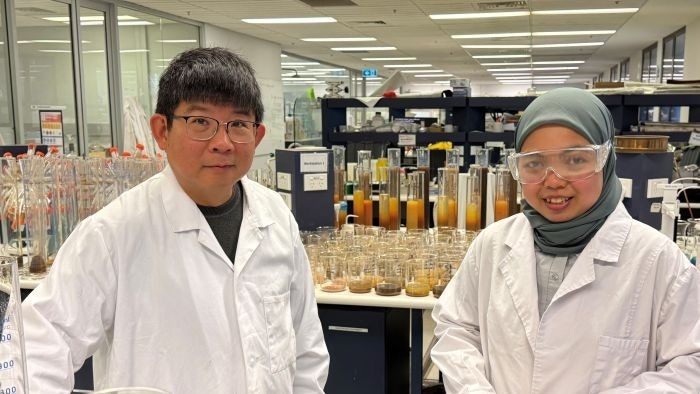The launch of an AI-powered soil moisture mapping tool created by University of Sydney researchers could transform irrigation, fuel reduction burning, and pasture management across Tasmania and beyond.
 Professor Budiman Minasny with PhD student Marliana Tri Widyastuti. Image Credit: University of Sydney
Professor Budiman Minasny with PhD student Marliana Tri Widyastuti. Image Credit: University of Sydney
The interactive online map can accurately measure soil moisture levels across most of the state, at very high resolutions, in close to real time. The results are published in the academic journal Soil.
Lead developer Marliana Tri Widyastuti, a PhD student from Indonesia at the Sydney Institute of Agriculture, believes the new system is a world-first.
“The mapping tool uses information from satellites, weather forecasts, soil and land maps, and then applies deep learning – a type of artificial intelligence – to combine real-time data from 39 in-ground soil moisture probes with local rainfall readings. Our software effectively joins up the dots to create a clearer picture,” Ms Widyastuti said.
Professor Budiman Minasny, co-researcher and a global expert in agricultural technology, said the secret of the AI-driven model is found in the complex algorithms that accurately monitor Tasmanian soil layers to a depth of 80 centimeters, in close to real time.
The daily predictions being generated are the most high-resolution maps of soil moisture I’ve ever seen. The resolution works down to 80 square meters. This rich data can help Tasmania’s land managers make faster, better decisions – such as timing the planting of crops, optimising irrigation flows or preparing for fires.”
Professor Budiman Minasny, co-researcher and global expert in agricultural technology, University of Sydney
The online soil moisture maps are freely available, and are already having real-world impact, following adoption by land managers at the Department of Natural Resources and Environment Tasmania (NRE Tas).
Dr Mathew Webb, a senior spatial scientist with the NRE Tas, said the tool is a good example of how AI technology can help manage environmental challenges.
“This new tool is great to have in the arsenal because it gives us more detailed information for decision making,” Dr Webb said.
“It’s already proving useful for trend monitoring – allowing us to monitor when local areas are moving into, and out of drought conditions. This is especially helpful for dairy regions like King Island, where changes in moisture have previously been hard to predict.
“Our fire managers are also starting to examine how it can help in planning fuel reduction burns in our national parks and forests. We’re hoping the precise data from the tool can be added to the resources already being used by fire managers when assessing when a planned burn can be carried out in an area,” Dr Webb said.
“This is just the beginning of the journey. We’re excited to explore this awesome technology in the long-term and use it to help predict and assist with managing the impacts of droughts or heavy rainfalls across our vast landscapes.”
Professor Minasny said the tool builds on more than a decade of soil science research developed at the University of Sydney, in partnership with Tasmanian agencies and national data providers.
“This is a perfect example of collaborative science delivering real-world impact – improving food security, protecting livestock and helping land managers adapt to increasingly variable rainfall,” Professor Minasny said.
Ms Widyastuti said she spearheaded the tool’s development as part of a Masters scholarship funded by the Indonesian government. She hopes to see the new tool help rural communities in her Indonesian homeland, as well as in Australia and other nations.
“Now we have shown that the tool works in Tasmania, I hope it might one day help millions of people across the globe. From better irrigation in our food-bowls, through to the management of drinking water catchments, or the protection of rainforests, swamps and fragile ecosystems from fire,” said Ms Widyastuti, who has now started her PhD research.
“I’m very pleased to be publishing our code and data as a resource for other agricultural scientists to use in their own global projects.”